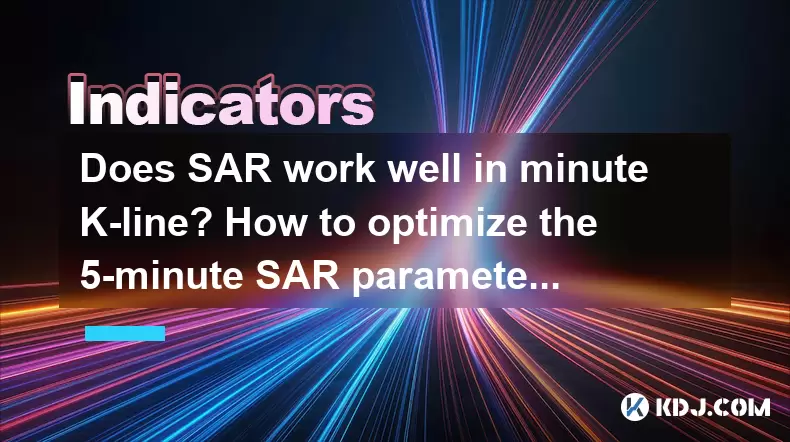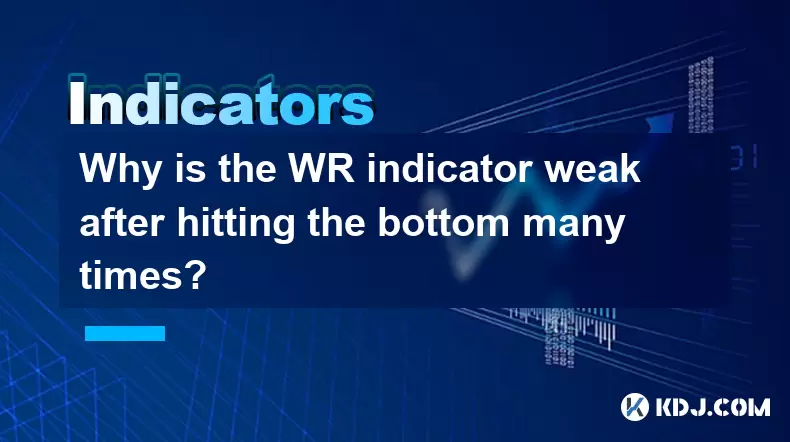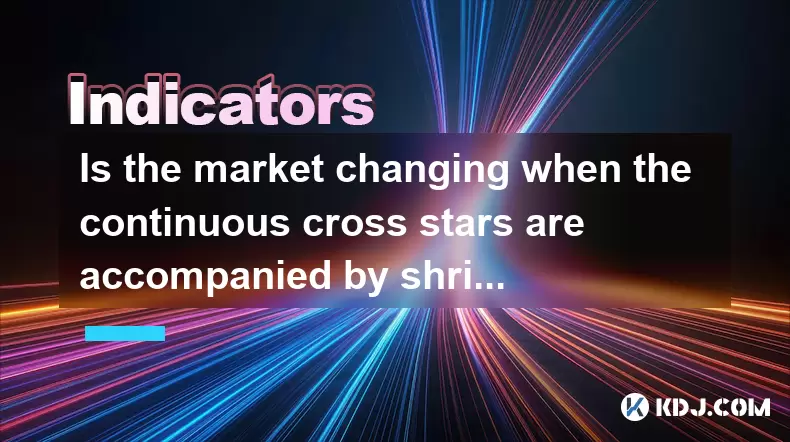-
 Bitcoin
Bitcoin $101,898.5005
-0.75% -
 Ethereum
Ethereum $2,258.1125
-1.07% -
 Tether USDt
Tether USDt $1.0004
0.01% -
 XRP
XRP $2.0178
-2.93% -
 BNB
BNB $624.0243
-1.53% -
 Solana
Solana $134.3298
-0.90% -
 USDC
USDC $0.9999
0.01% -
 TRON
TRON $0.2675
-2.05% -
 Dogecoin
Dogecoin $0.1538
-1.96% -
 Cardano
Cardano $0.5482
-1.11% -
 Hyperliquid
Hyperliquid $35.5636
5.45% -
 Bitcoin Cash
Bitcoin Cash $453.4902
-1.66% -
 Sui
Sui $2.5134
-2.97% -
 UNUS SED LEO
UNUS SED LEO $9.1292
1.77% -
 Chainlink
Chainlink $11.8457
-1.60% -
 Stellar
Stellar $0.2312
-2.73% -
 Avalanche
Avalanche $16.9721
0.29% -
 Toncoin
Toncoin $2.7549
-3.82% -
 Shiba Inu
Shiba Inu $0.0...01081
-1.10% -
 Litecoin
Litecoin $80.8250
-0.71% -
 Hedera
Hedera $0.1374
0.21% -
 Monero
Monero $305.4827
-2.36% -
 Ethena USDe
Ethena USDe $1.0006
0.00% -
 Dai
Dai $1.0000
-0.01% -
 Polkadot
Polkadot $3.2085
-3.12% -
 Bitget Token
Bitget Token $4.0845
-3.13% -
 Uniswap
Uniswap $6.3353
-1.63% -
 Pi
Pi $0.5085
-0.70% -
 Pepe
Pepe $0.0...08913
-3.82% -
 Aave
Aave $232.7090
-0.58%
Does SAR work well in minute K-line? How to optimize the 5-minute SAR parameters?
SAR indicator can be optimized for 5-minute K-lines in crypto trading by adjusting AF to 0.02 and MAF to 0.2, reducing false signals in volatile markets.
May 23, 2025 at 03:08 pm

Introduction to SAR in Cryptocurrency Trading
The Parabolic Stop and Reverse (SAR), commonly known as the SAR indicator, is a popular tool used by traders to determine potential reversals in the price of an asset. In the context of cryptocurrency trading, SAR can be applied to various time frames, including minute K-lines. The effectiveness of SAR in minute K-lines, particularly in 5-minute K-lines, and how to optimize its parameters for better performance, are critical considerations for traders.
Understanding SAR in Minute K-Lines
When it comes to applying the SAR indicator to minute K-lines, traders often question its reliability. Minute K-lines, such as the 5-minute interval, can be quite volatile, especially in the cryptocurrency market. This volatility can lead to frequent signals, which might not always be accurate. However, with proper understanding and optimization, SAR can still be a valuable tool.
The SAR indicator works by plotting points on a chart that represent potential reversal levels. In a rising market, these points are positioned below the price, and in a falling market, they are positioned above the price. The key to using SAR effectively in minute K-lines is to recognize that the indicator's sensitivity needs to be adjusted to account for the rapid price movements.
Optimizing SAR Parameters for 5-Minute K-Lines
To optimize the SAR indicator for 5-minute K-lines, traders need to adjust its parameters, primarily the Acceleration Factor (AF) and the Maximum Acceleration Factor (MAF). The default settings for these parameters are often not suitable for the fast-paced nature of minute K-lines in cryptocurrency trading.
- Acceleration Factor (AF): This parameter determines how quickly the SAR points move towards the price. A lower AF value will result in slower movement, which can be beneficial in reducing false signals in volatile markets.
- Maximum Acceleration Factor (MAF): This sets the upper limit for the AF. A higher MAF can lead to quicker trend identification but might also increase the likelihood of false signals.
For 5-minute K-lines, a common starting point for optimization might be an AF of 0.02 and a MAF of 0.2. However, these values can be fine-tuned based on the specific cryptocurrency and market conditions.
Steps to Optimize SAR Parameters in Trading Platforms
Optimizing the SAR parameters on a trading platform involves several steps. Here's how you can do it on a typical trading platform:
- Open your trading platform: Ensure you are logged into your trading account and have access to the charting tools.
- Select the cryptocurrency pair: Choose the pair you wish to analyze, such as BTC/USDT.
- Set the time frame to 5-minute K-lines: Adjust the chart to display 5-minute intervals.
- Add the SAR indicator: Navigate to the indicators menu and select the SAR indicator.
- Adjust the SAR parameters: Change the AF to 0.02 and the MAF to 0.2. You may need to experiment with these values to find the best settings for your trading strategy.
- Monitor and analyze: Observe the SAR points on the chart and see how they interact with the price movements. Adjust the parameters as needed to reduce false signals and improve the accuracy of the indicator.
Testing and Backtesting SAR on 5-Minute K-Lines
To determine if the optimized SAR parameters are effective, traders should engage in testing and backtesting. This involves applying the SAR indicator to historical data to see how well it would have performed with the new settings.
- Select historical data: Choose a period of historical data that represents typical market conditions for the cryptocurrency you are trading.
- Apply the optimized SAR parameters: Use the AF of 0.02 and MAF of 0.2 or your adjusted values.
- Analyze the results: Look at the entry and exit points generated by the SAR indicator. Calculate the potential profits and losses to assess the effectiveness of the parameters.
- Iterate and refine: If the results are not satisfactory, adjust the parameters and repeat the backtesting process until you find a setting that works well.
Practical Application of SAR in 5-Minute K-Line Trading
Using the SAR indicator in real-time trading on 5-minute K-lines requires a disciplined approach. Traders should combine the SAR signals with other technical analysis tools to confirm potential reversals.
- Identify SAR signals: Look for instances where the price crosses the SAR points. A bullish signal occurs when the price moves above the SAR point, and a bearish signal occurs when the price moves below the SAR point.
- Confirm with other indicators: Use tools like the Relative Strength Index (RSI) or Moving Averages to validate the SAR signals. For example, if the SAR indicates a bullish reversal and the RSI is oversold, it might be a stronger signal.
- Set stop-loss and take-profit levels: Based on the SAR points, set your stop-loss and take-profit levels to manage risk and lock in profits.
- Monitor and adjust: Continuously monitor the market and adjust your strategy as needed. The effectiveness of the SAR indicator can change with market conditions, so flexibility is key.
Frequently Asked Questions
Q: Can SAR be used effectively on other minute K-lines, such as 1-minute or 3-minute intervals?
A: Yes, SAR can be applied to other minute K-lines, but the parameters may need further optimization. For shorter intervals like 1-minute K-lines, a lower AF and MAF might be necessary to account for the increased volatility. For 3-minute K-lines, the settings might be closer to those used for 5-minute K-lines, but adjustments are still required based on the specific cryptocurrency and market conditions.
Q: How does the SAR indicator perform in different market conditions, such as trending versus ranging markets?
A: The SAR indicator tends to perform better in trending markets where clear directional movements are present. In ranging markets, the SAR can generate more false signals due to the lack of a sustained trend. Traders should use additional indicators to determine the market's state and adjust their reliance on SAR accordingly.
Q: Is it possible to automate trading strategies using the SAR indicator on 5-minute K-lines?
A: Yes, it is possible to automate trading strategies using the SAR indicator on 5-minute K-lines. Many trading platforms and algorithmic trading software allow for the automation of entry and exit signals based on SAR. However, traders should thoroughly backtest their automated strategies and consider incorporating risk management rules to handle the volatility of minute K-lines.
Q: How can traders combine the SAR indicator with other technical analysis tools for better results?
A: Traders can combine the SAR indicator with other tools like the Moving Average Convergence Divergence (MACD), Bollinger Bands, or the Relative Strength Index (RSI) for better results. For example, using the SAR to identify potential reversals and confirming those signals with the MACD can provide a more robust trading strategy. Additionally, Bollinger Bands can help identify periods of high volatility, which might affect the reliability of SAR signals.
Disclaimer:info@kdj.com
The information provided is not trading advice. kdj.com does not assume any responsibility for any investments made based on the information provided in this article. Cryptocurrencies are highly volatile and it is highly recommended that you invest with caution after thorough research!
If you believe that the content used on this website infringes your copyright, please contact us immediately (info@kdj.com) and we will delete it promptly.
- Binance, Founder, and ATH: Navigating the Crypto Landscape
- 2025-06-23 18:25:12
- Token Transfers Get a Human Touch: Emotion-Driven Design in Web3
- 2025-06-23 18:45:13
- Shiba Inu: Price Recovery on the Horizon? Buy Orders Suggest Potential Upswing
- 2025-06-23 18:45:13
- BTC Bounce or Bust? Navigating the Bull Market to $982K and Beyond!
- 2025-06-23 19:05:12
- Crypto Analyst Comeback: BTC Bounces Back Amidst Geopolitical Jitters
- 2025-06-23 19:05:12
- XRP Price Under Pressure: Breakout or Breakdown at Pattern Edges?
- 2025-06-23 18:25:12
Related knowledge

Is it effective when the DIF line suddenly crosses the zero axis when the volume is shrinking and the market is trading sideways?
Jun 23,2025 at 07:29pm
Understanding the DIF Line in Technical AnalysisThe DIF line, or the Difference Line, is a critical component of the MACD (Moving Average Convergence Divergence) indicator, widely used in technical analysis across cryptocurrency and traditional financial markets. It represents the difference between the 12-period EMA (Exponential Moving Average) and the...

Why is the WR indicator weak after hitting the bottom many times?
Jun 23,2025 at 07:56pm
Understanding the WR Indicator in Cryptocurrency TradingThe Williams %R (WR) indicator is a momentum oscillator used by traders to identify overbought and oversold levels in the market. It ranges from 0 to -100, with readings above -20 considered overbought and below -80 considered oversold. In the context of cryptocurrency trading, where volatility is ...

Is the shrinking cross star after the historical high a signal of topping?
Jun 23,2025 at 05:56pm
Understanding the Shrinking Cross Star PatternIn technical analysis, candlestick patterns are essential tools for traders to predict potential price movements. One such pattern is the shrinking cross star, which appears as a small-bodied candle with long upper and lower shadows, indicating indecision in the market. When this pattern forms after an asset...

Is the market changing when the continuous cross stars are accompanied by shrinking volume?
Jun 23,2025 at 07:42pm
Understanding Continuous Cross Stars in Cryptocurrency ChartsIn the world of cryptocurrency trading, candlestick patterns play a crucial role in predicting price movements. One such pattern is the continuous cross star. This pattern typically appears when there's uncertainty among traders, and it often signals a potential reversal or continuation depend...

Is the high opening and low closing and huge volume the next day a trap for more?
Jun 23,2025 at 05:07pm
Understanding High Opening and Low Closing with Huge VolumeWhen traders observe a high opening followed by a low closing and massive volume the next day, it often raises concerns about whether this is a trap set by larger players in the market. This pattern typically indicates strong volatility within a short period, which can confuse retail investors. ...

How to interpret the MACD's second golden cross on the water but insufficient volume?
Jun 23,2025 at 05:01pm
Understanding the MACD Indicator and Its SignificanceThe Moving Average Convergence Divergence (MACD) is a widely used technical analysis tool in cryptocurrency trading. It helps traders identify potential buy or sell signals by showing the relationship between two moving averages of an asset’s price. The MACD line, signal line, and histogram are the th...

Is it effective when the DIF line suddenly crosses the zero axis when the volume is shrinking and the market is trading sideways?
Jun 23,2025 at 07:29pm
Understanding the DIF Line in Technical AnalysisThe DIF line, or the Difference Line, is a critical component of the MACD (Moving Average Convergence Divergence) indicator, widely used in technical analysis across cryptocurrency and traditional financial markets. It represents the difference between the 12-period EMA (Exponential Moving Average) and the...

Why is the WR indicator weak after hitting the bottom many times?
Jun 23,2025 at 07:56pm
Understanding the WR Indicator in Cryptocurrency TradingThe Williams %R (WR) indicator is a momentum oscillator used by traders to identify overbought and oversold levels in the market. It ranges from 0 to -100, with readings above -20 considered overbought and below -80 considered oversold. In the context of cryptocurrency trading, where volatility is ...

Is the shrinking cross star after the historical high a signal of topping?
Jun 23,2025 at 05:56pm
Understanding the Shrinking Cross Star PatternIn technical analysis, candlestick patterns are essential tools for traders to predict potential price movements. One such pattern is the shrinking cross star, which appears as a small-bodied candle with long upper and lower shadows, indicating indecision in the market. When this pattern forms after an asset...

Is the market changing when the continuous cross stars are accompanied by shrinking volume?
Jun 23,2025 at 07:42pm
Understanding Continuous Cross Stars in Cryptocurrency ChartsIn the world of cryptocurrency trading, candlestick patterns play a crucial role in predicting price movements. One such pattern is the continuous cross star. This pattern typically appears when there's uncertainty among traders, and it often signals a potential reversal or continuation depend...

Is the high opening and low closing and huge volume the next day a trap for more?
Jun 23,2025 at 05:07pm
Understanding High Opening and Low Closing with Huge VolumeWhen traders observe a high opening followed by a low closing and massive volume the next day, it often raises concerns about whether this is a trap set by larger players in the market. This pattern typically indicates strong volatility within a short period, which can confuse retail investors. ...

How to interpret the MACD's second golden cross on the water but insufficient volume?
Jun 23,2025 at 05:01pm
Understanding the MACD Indicator and Its SignificanceThe Moving Average Convergence Divergence (MACD) is a widely used technical analysis tool in cryptocurrency trading. It helps traders identify potential buy or sell signals by showing the relationship between two moving averages of an asset’s price. The MACD line, signal line, and histogram are the th...
See all articles
























































































